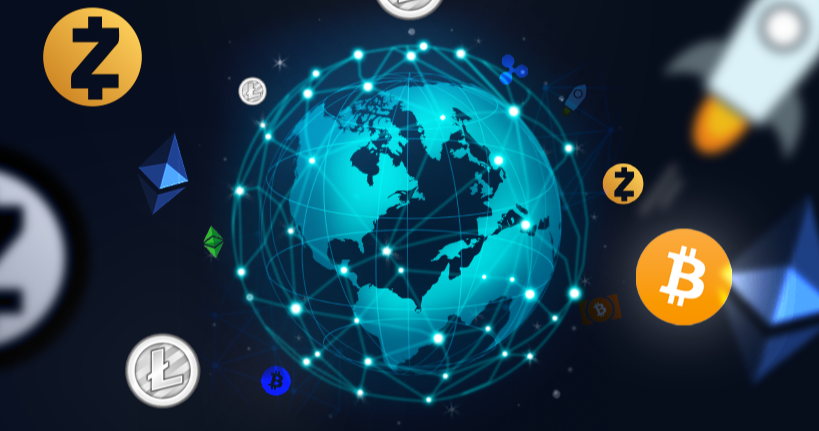Adoption of Cryptocurrency Vs the Early Rise of the Internet. If you’re interested in studying the early adoption of the internet and cryptocurrency, there are several similarities between the two phenomena. The world wide web, as it’s commonly called, was invented by Tim Berners Lee, who initially saw it as a way for physicists to converse with one another and for people to research, shop, and communicate. The early rise of the internet was centered around the first five years and then grew rapidly from 1995 to 2000. Although there were some short-term detractions from 1995, they were short-lived and the internet eventually became what it is today.
XRP
XRP is a cryptocurrency that aims to be used for cross-border transactions. It offers lower costs and faster speeds than fiat currency. It also has the potential to gain institutional backing. This means that the XRP coin price can climb higher over time.
The adoption of cryptocurrency has the potential to change the way we think about money, and could potentially reshape nearly every industry. However, the industry is at an early stage. Initially, Bitcoin was primarily used by cryptographers and computer experts. This group advocated for privacy-preserving technologies. Today, popular cryptocurrencies such as Bitcoin and XRP have experienced explosive growth, but they’ve only achieved a small fraction of their potential.
XRP is in the process of undergoing a probe by the US Securities and Exchange Commission (SEC). The SEC is pushing for XRP to be treated like a regular security asset, requiring stricter regulations. As a result, Ripple’s price has fallen by 77% since its all-time high of $3.30 on January 04, 2018. By May, it recovered 5.0% of its previous sell-off.
The SEC’s lawsuit against Ripple is a long-term battle, but the company’s CEO, Brad Garlinghouse, says the lawsuit is nearing its end. Although there’s a lot of uncertainty, he says that the court is asking the right questions. Meanwhile, individual XRP holders have filed “friends-of-the-court” briefs and asked to be added as defendants. Despite this, the judge has ruled that individual XRP holders can’t be named as defendants in the case.
Solana
The growth of Solana’s ecosystem has put it at the forefront of the cryptocurrency space. The company closed a $314 million private token sale in early June and has emerged as a formidable competitor to Ethereum. Ethereum is the most popular public blockchain and is plagued by high transaction costs and network congestion. In response to this, many new Layer 2 solutions have emerged. Meanwhile, Solana and other new Layer 1 networks aim to develop scalable dapps beyond Ethereum.
Solana is expected to experience hyper-growth in the coming year. It could even surpass the $500 mark. Depending on how well the crypto market performs, Solana’s asset value could rise even higher. Considering the current market conditions, Solana could continue to perform well in 2018. In addition, Solana’s market cap may be lower than Ethereum 2.0, which has the potential to overtake Ethereum.
The Solana network uses a combination of consensus mechanisms to ensure the security of transactions. It claims to be capable of processing up to 50,000 transactions per second. This high speed is possible due to its unique blend of delegated proof of stake and proof of history. The Solana network also has a high transaction capacity due to its use of GPUs.
Solana is a decentralized network and is censorship resistant. It is run by thousands of independent nodes. The system is also fast, low cost, and scalable, allowing it to be used for a variety of applications.
USD Coin
In the early 1990s, the world began to connect through the Internet. The rise of banner ads and the first online stores made the Internet accessible to everyone, and companies like Pizza Hut and Wired began exploring the concept of digital transactions. The internet became more widespread and faster as computers became smaller and faster, and CD-Rom drives replaced floppy disks. Dot-com companies exploded in popularity, and in 1997, 17 of them bought ad spots during the Super Bowl. The Internet had become an essential part of daily life.
The internet’s widespread adoption led to the dot-com crash in the early 2000s. Many over-inflated publicly listed companies failed under the weight of a massive decline in consumer confidence. The recent crypto crash has a lot of similarities to this infamous era. Initially, the rise of the Internet was associated with new technologies and business opportunities, with the promise of revolutionizing the way we learn, shop, and consume services.
Cardano
Cardano’s era, named after the famous 17th century French poet, will provide the finishing touches to the blockchain and mature it into a self-sustainable platform. During this time, the protocol will also introduce a voting system and a treasury. This will allow participants to use their stakes and voting rights to help determine how the network should be run. This will bring Cardano closer to full decentralization.
To make this process easier, Cardano has created a platform that makes it possible for users to delegate stakes to other users. Cardano users can do this by using either their Yoroi or Daedalus wallet. Delegating a stake to a third party is as easy as transferring a single token to another address. This platform is built to help developers build decentralized financial applications and thereby increase the value of Cardano.
As a third-generation cryptocurrency, Cardano is poised to rival Ethereum. The first cryptocurrency, Bitcoin, ushered in a new era by pioneering a decentralized way to move value from one part of the world to another without a trusted counterparty. In essence, it posed the question of “How much is a bitcoin worth?” People treated Bitcoin as valuable and the market value was enough to support the decentralized network.
In the early 2000s, the adoption of the internet saw a similar phenomenon. Investors were eager to invest in new technologies, and many companies changed their names to be more “web-oriented.” As a result, internet stocks soared to unprecedented heights, resulting in a bubble. This bubble eventually exploded, and the prices of internet stocks crashed dramatically.
El Salvador
As a country with a high level of unemployment, El Salvador’s government adopted Bitcoin, which is a digital currency. The government bought bitcoin using public funds and introduced a digital wallet called Chivo, which means “cool.” Chivo allows users to buy, sell, and transfer bitcoins for free, and allows for fast cross-border payments. Most Salvadorans are cash-based, so chivo offers a convenient onramp for people who don’t have access to traditional financial services. The government also invested in a nationwide network of Bitcoin ATMs.
While this is a major milestone, El Salvador’s cryptocurrency adoption is still in its early stages. It may be a way to attract investors to the country, and could be the beginning of a new era of growth and prosperity. The international community should encourage El Salvador to make the most of its newfound cryptocurrency adoption. If the country can pull it off, it may be an example for the rest of the world.
El Salvador has extensive ties to the United States. Its economy received $4.6 billion in remittances last year, making up 17 percent of its GDP at the time. Meanwhile, the US government sent a total of $88 million to El Salvador last year.
Bitcoin
During the early years of the Internet, adoption rates of the internet grew rapidly, with the first billion users signing up in a decade. But the internet also had a crash in the form of the dot-com bubble, a time when publicly listed companies suffered a massive loss of consumer confidence. The recent crypto crash demonstrates a similar trend. Both the internet and the crypto market were associated with new technology and new business opportunities, and each promised to revolutionize the way people retain information and purchase services.
Bitcoin adoption is currently at the early stages of global adoption, with fewer than 2% of the world’s population using it. The early rise of the Internet was slow, with many pessimistic predictions, which ended up being completely wrong. It took until the late 1990s for global adoption to reach 5%, with some analysts predicting that Bitcoin will follow a similar trajectory.
Early adopters typically become stuck with a new technology, but later reap the benefits of increased use. This is the case with cryptocurrencies, where more users are creating demand for the currency. The price of a bitcoin is likely to rise in value as more people become interested in its use and its increasing popularity. However, a lack of clear regulations could slow the process.
Although the rate of Bitcoin adoption is still much slower than the rise of the internet, the trend is growing rapidly. By 2024, the number of users of cryptocurrency will reach one billion users worldwide. The internet had sixteen million users in 1995.




